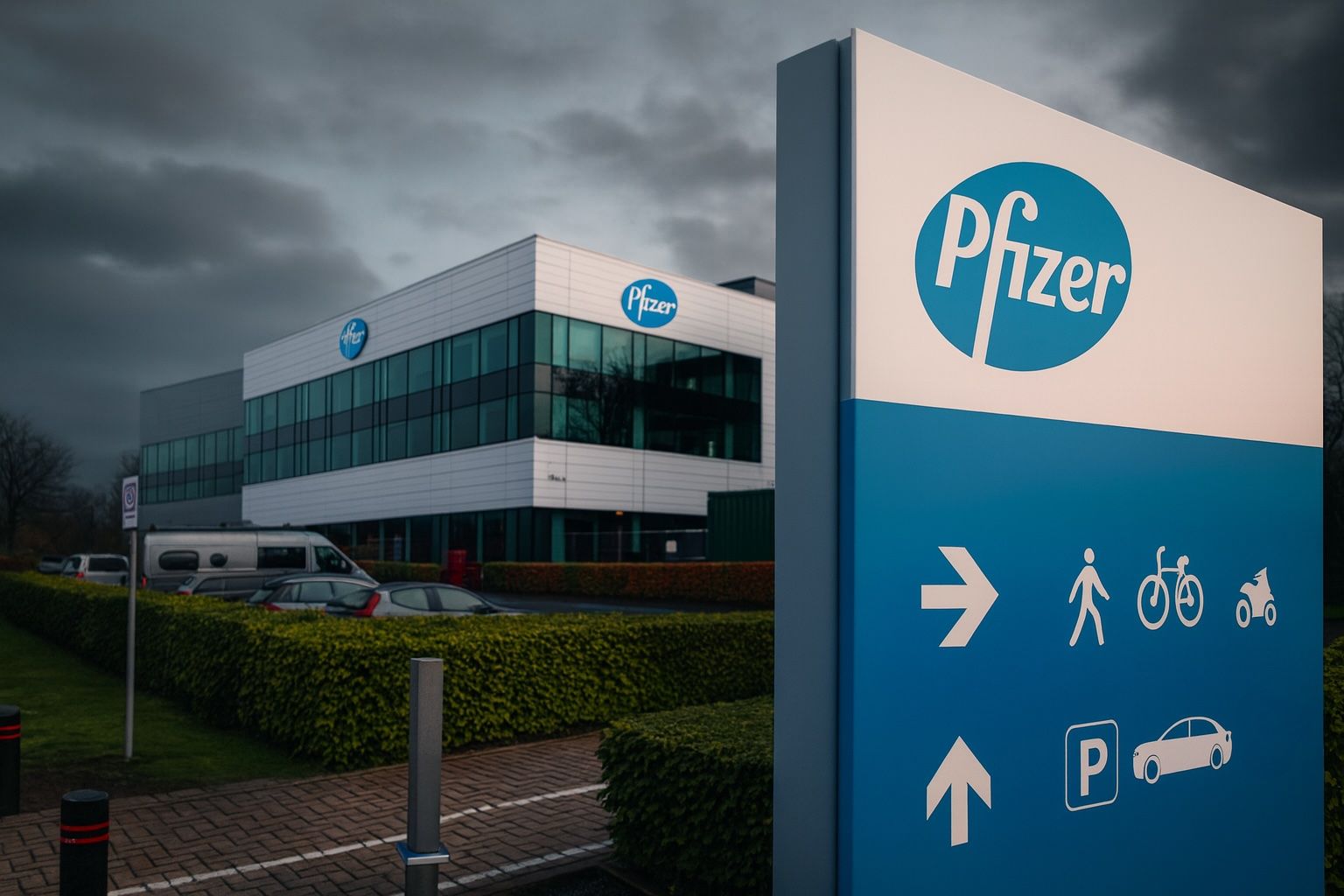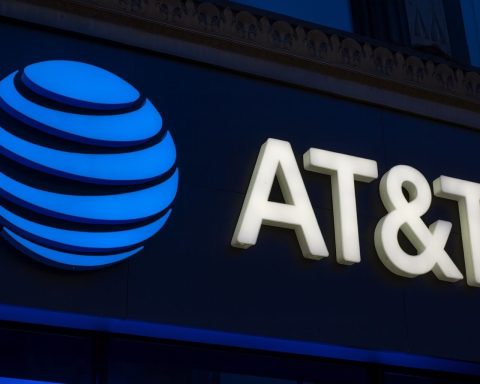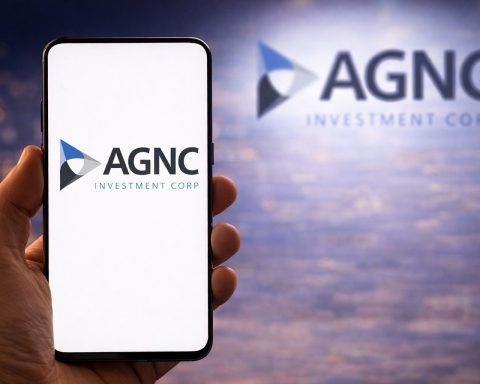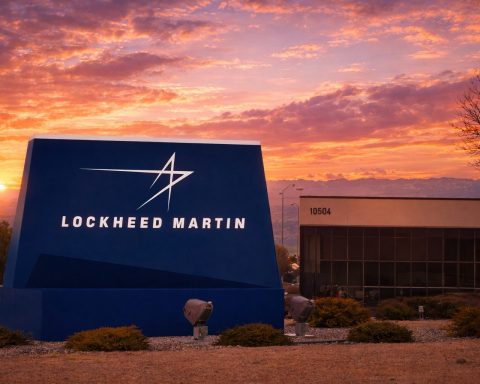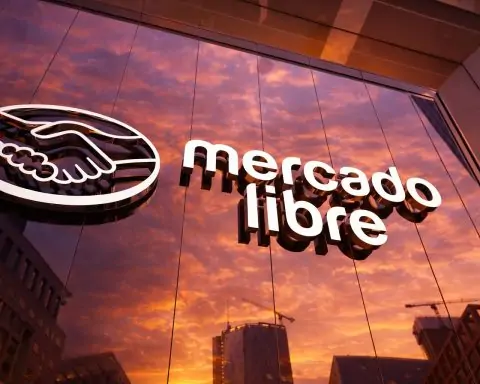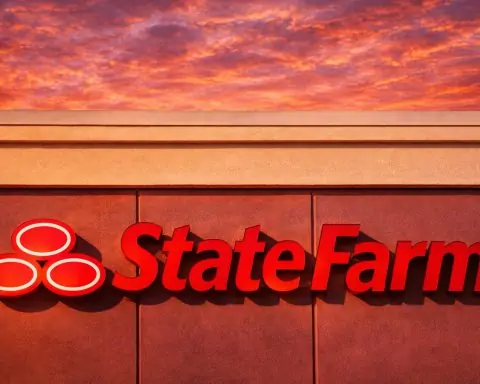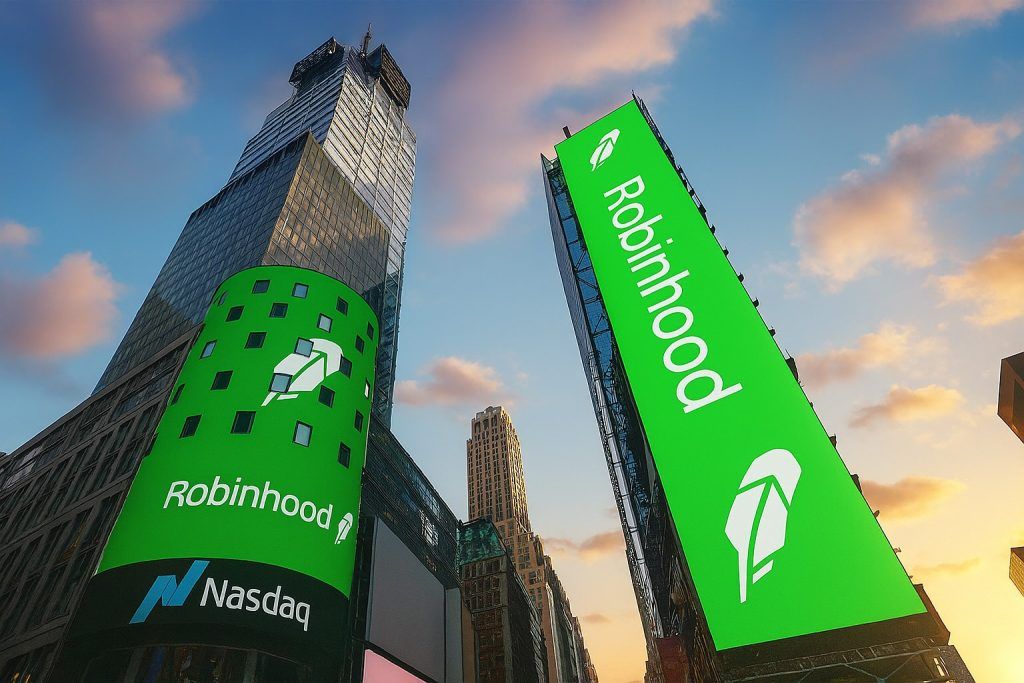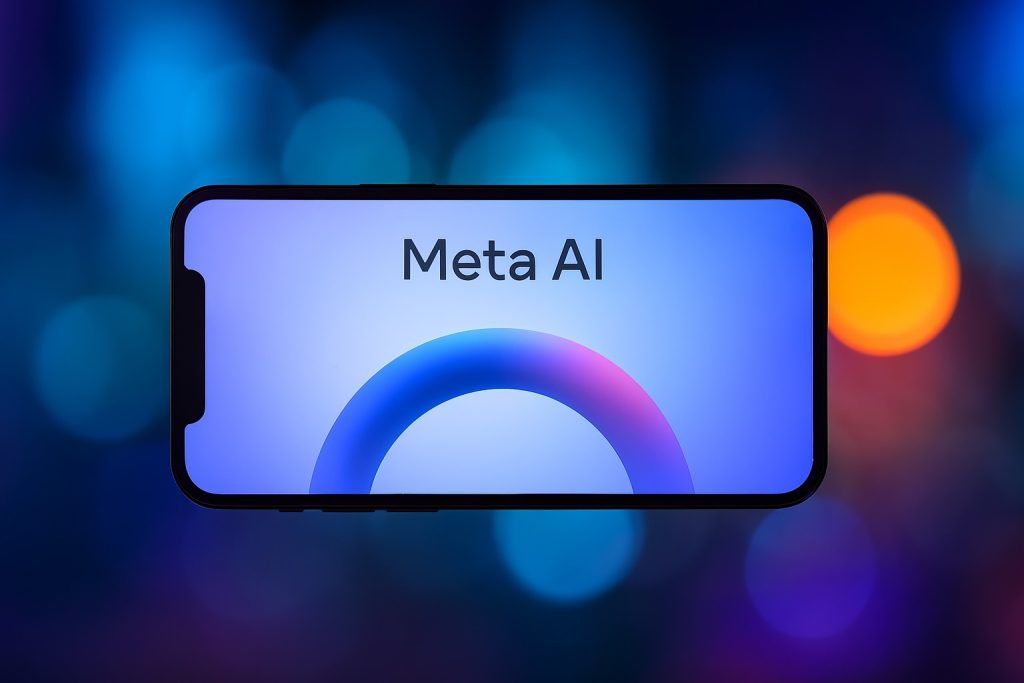- Surging Share Price: Pfizer (NYSE: PFE) stock has staged a sharp rebound in late September 2025. Shares jumped about 15% in the final week of Q3, climbing from roughly $23.60 on Sept 25 to around $27.20 by Oct 1 [1] [2]. The stock spiked ~6% on Sept 30 and again on Oct 1 after major news broke, marking one of its best weekly rallies in years [3]. As of Oct 6, PFE hovers near $27–$28 – toward the high end of its 52-week range (~$21–$30) after this sudden surge [4].
- Trump Pricing Deal Spurs Rally: A landmark drug-pricing deal with the Trump administration lit a fire under Pfizer’s stock [5]. On Sept 30, President Donald Trump announced Pfizer agreed to slash U.S. Medicaid drug prices to match what other rich countries pay, in exchange for relief from looming 100% import tariffs [6] [7]. Trump praised Pfizer’s cooperation and unveiled a “TrumpRx” direct-to-consumer drug website launching in 2026 [8]. Investors cheered the avoidance of worst-case pricing scenarios – Pfizer’s shares leapt over 6%, and other pharma stocks rose 2–7% in sympathy [9] [10].
- Big Obesity Drug Gamble: Pfizer is betting nearly $7.3 billion on the booming weight-loss drug market. In late September it agreed to acquire Metsera Inc. for $4.9 billion upfront (up to $7.3 B with milestones) [11] [12]. Metsera brings a portfolio of next-generation obesity therapies – including an injectable GLP-1 agonist and an amylin analog – that Pfizer hopes can challenge Novo Nordisk and Lilly’s blockbuster drugs [13] [14]. Early data are promising: Metsera’s lead candidate helped patients lose ~14% of body weight in 28 weeks (placebo-adjusted), matching results of Eli Lilly’s tirzepatide (Zepbound) in trials [15] [16]. Analysts say a monthly dosing option with fewer side effects could give Pfizer an edge, calling Metsera’s drug potentially “best-in-class” if results hold up [17] [18].
- Strong Financials (High Yield, Low P/E): Pfizer’s stock slump earlier in 2025 drove its dividend yield above 7%, delighting income investors [19]. The quarterly dividend of $0.43 now yields ~7.3% annually – more than double peers like Merck or J&J (≈3%) – yet is supported by a reasonable ~60% payout of earnings [20]. Pfizer’s valuation looks cheap: at ~7–8× forward earnings it trades at half the pharma industry’s average (~14×) [21]. The forward PEG ratio is ~0.8 vs ~1.5 for big pharma peers, signaling a potential bargain if Pfizer can stabilize earnings [22]. Its market capitalization stands around $150 billion [23] – still among the world’s largest drugmakers – but far off its pandemic-era peak.
- Recent Earnings & Outlook: Despite declining COVID vaccine sales, Pfizer delivered surprisingly strong Q2 2025 results, with revenue up ~10% YoY to $14.7 billion [24]. Key drivers included its COVID products (Comirnaty vaccine and Paxlovid antiviral) and other franchises like Vyndaqel [25]. Pfizer even raised full-year EPS guidance, now projecting 2025 sales of $61–64 B (roughly flat vs 2024 as new products fill the COVID gap) [26]. The company is aggressively cutting costs (aiming for $4 B savings by 2025) to protect margins and fund its pipeline [27]. Upcoming Q3 earnings (Nov 4, 2025) will be closely watched – consensus expects around $0.79 EPS for the quarter [28] – for any updates on Pfizer’s post-pandemic recovery.
- Pipeline & FDA Updates: Pfizer is racing to reinvigorate its drug pipeline. In addition to the obesity push, it plans to showcase data from 45+ oncology studies (including five late-breaking trials) at the ESMO 2025 cancer conference [29] – highlighting advances from its $43 billion acquisition of Seagen (completed in 2023) in immunotherapy and targeted cancer drugs. Pfizer also announced robust Phase 3 results for a new COVID-19 vaccine formula adapted to the latest variant (strain LP.8.1), reinforcing a recent FDA approval for that updated booster [30]. Not all projects are panning out, though: Pfizer’s partner Arvinas revealed plans to seek a new commercial partner for their jointly developed breast cancer drug vepdegestrant (under FDA review), hinting at a strategic pullback by Pfizer on that program [31].
- Legal Issues: Pfizer faces some legal headwinds. Notably, it’s battling hundreds of lawsuits claiming its Depo-Provera contraceptive shot caused rare brain tumors (meningiomas). In a Sept 29 court hearing, Pfizer argued the suits should be thrown out because the FDA itself had previously refused Pfizer’s request to add a tumor warning on Depo-Provera’s label [32] [33]. Plaintiffs counter that Pfizer knew of the risk since the 1980s and failed to warn patients [34]. A federal judge’s upcoming decision on whether these cases are preempted by federal law will be a key legal test [35]. Meanwhile, Pfizer’s recent pricing deal with the government also comes with political scrutiny – but so far it appears to have a broad industry nod of relief, given the limited scope to Medicaid [36].
- Analyst Sentiment – Cautious Optimism: Wall Street’s consensus on PFE stock is neutral to mildly bullish. The average 12-month price target sits around $29–30, implying roughly 10–15% upside from current levels [37] [38]. Analysts universally highlight Pfizer’s unusually low valuation and hefty dividend as reasons the stock could be attractive now [39]. BMO Capital’s Evan Seigerman called the Trump pricing pact a “meaningful win” for Pfizer’s business, reiterating an Outperform (Buy) rating with a $30 target [40]. Jefferies likewise reaffirmed its Buy rating, and even a more cautious BofA Securities raised its price objective from $28 to $30 (while maintaining a Neutral stance) after the latest news [41]. Many see the recent policy deal as removing a major overhang – “a highly favorable outcome for the industry,” according to Gabelli Funds, since price concessions apply only to Medicaid (already heavily discounted) [42]. Some commentators even dub Pfizer a “‘hated’ stock that now looks like an obesity bargain,” arguing the market is underestimating Pfizer’s foothold in the exploding weight-loss arena [43]. Still, sentiment isn’t unanimously rosy: bears caution that Pfizer faces longer-term patent expirations and execution risks in translating its pipeline bets into big revenues [44].
Stock Performance: From Laggard to Late-September Lift
For much of 2025, Pfizer’s stock was stuck in a rut – but that changed dramatically as Q4 approached. By late September, PFE had drifted down near multi-year lows around $23, reflecting a post-pandemic hangover. As of Sept 25, the stock was down roughly 9% year-to-date and about 18% below its level one year prior [45]. It traded near the bottom of its 52-week range ($20.92 – $30.43), weighed down by steep declines in COVID vaccine and pill sales and general pessimism on its growth prospects [46] [47]. In fact, Pfizer’s COVID-driven revenues had plummeted from $37.8 billion in 2022 to an estimated $12.5 B in 2024, creating a “COVID cliff” that halved earnings and soured the stock’s appeal [48]. The result: Pfizer – once a market darling – became an underperformer in 2023–25, even as the broader S&P 500 rose modestly and other big pharma names held steadier [49].
That dour picture flipped almost overnight at the end of September. Starting Sept 28, Pfizer shares went on a tear, erasing months of malaise in a week. The stock rocketed from about $23.60 to $27+ by Oct 1 [50]. The biggest moves came in two bursts: Sept 30, when PFE jumped ~6.8% on the day, and Oct 1, when it climbed another ~6.8% [51]. In just five trading sessions (Sept 26–Oct 1), Pfizer stock surged roughly 15% [52] – an impressive reversal for a $150 billion market cap stalwart. Trading volumes exploded to ~150 million shares on those rally days (vs. an average closer to 25–30M), underscoring the wave of investor interest [53].
By the end of that week (Friday, Oct 3), Pfizer closed around $27.37 [54]. That put the stock near its highest levels in 9+ months, suddenly much closer to Wall Street’s price targets. It also nudged Pfizer’s total return into positive territory for 2025 to date, a remarkable turnaround from the –9% YTD loss seen days earlier [55]. For context, PFE’s ~$27 share price in early October is roughly the same level it traded at before Russia’s invasion of Ukraine (early 2022) and well below its pandemic peak around $50, suggesting room to run if fundamentals improve.
What sparked this sudden bull stampede into Pfizer? Two main catalysts: a headline-grabbing deal on drug pricing that calmed regulatory fears, and Pfizer’s bold move into the red-hot obesity drug space. These developments, detailed below, appear to have reset investor sentiment virtually overnight.
Trump’s Drug Price Pact – “Worse-Case” Fears Fade
The first jolt came from Washington, D.C. On September 30, President Trump and Pfizer unveiled a surprise drug pricing agreement that instantly changed the mood music around big pharma. For months, the industry had been on edge over Trump’s threats to rein in drug costs – including an unprecedented warning of 100% import tariffs on pharmaceuticals unless companies cut U.S. prices [56]. Trump had set a Sept 29 deadline for drugmakers to offer “most-favored-nation” price concessions, pressuring CEOs publicly. Many on Wall Street feared a potential showdown that could dent pharma profits.
Pfizer broke the impasse. In an Oval Office event on Sept 30, Pfizer’s CEO Albert Bourla stood beside Trump and agreed to a landmark deal: Pfizer will match the prices it charges Medicaid (the U.S. government insurance for low-income patients) to the lowest prices it offers in other developed countries [57] [58]. In return, the White House granted Pfizer a three-year exemption from the threatened tariffs on imported drugs [59] [60]. Pfizer also committed to invest $70 billion in U.S.-based research and manufacturing over the coming years, aligning with Trump’s “America First” push [61].
For patients, the deal aims to lower out-of-pocket costs on a range of Pfizer medicines – a poster at the press event highlighted big price cuts (50%+ off list price) for drugs like rheumatoid arthritis therapy Xeljanz and migraine nasal spray Zavzpret when bought through Medicaid [62]. And looking forward, Trump touted that “TrumpRx”, a new government-run online pharmacy, will launch in 2026 with Pfizer as an anchor participant [63]. “The United States is done subsidizing the healthcare of the rest of the world,” Trump declared, framing the move as forcing other rich nations to share the burden of drug costs [64] [65].
Crucially for investors, Pfizer’s concessions were limited in scope – and thus far less onerous than feared. The price matching applies only to Medicaid, which represents a smaller slice of U.S. drug spending (Medicaid’s ~$80 B is dwarfed by Medicare’s $216 B) [66]. Many Medicaid drugs already get steep mandatory rebates (often 60–80% off) [67], so Pfizer’s additional discounts may have minimal incremental impact on its bottom line [68]. As one healthcare fund manager put it, the deal is “highly favorable” given it avoids touching the much larger Medicare market and comes with a tariff grace period [69]. In other words, the worst-case scenario was taken off the table. “The price concessions are limited to Medicaid… the incremental impact on manufacturers is relatively minimal,” noted Daniel Barasa of Gabelli Funds [70].
The market reacted with relief and euphoria. Pfizer’s stock spiked 6.8% on Sept 30 on huge volume [71]. And it wasn’t alone: shares of other pharma giants – Eli Lilly, Merck, AbbVie, Amgen, GSK, etc. – all jumped 2–7% that day and the next [72] [73]. By signaling a cooperative solution, Pfizer’s deal defused a major policy threat hanging over the sector. “This removes the overhang and marks the beginning of the rebound for Big Pharma,” one analyst told Reuters, noting that fears of draconian pricing reforms or trade war fallout have subsided [74]. European pharma stocks even rallied in solidarity, as Trump’s tariff threats had a global reach [75].
Not everyone applauded, of course. Some patient advocates and political opponents dismissed “TrumpRx” as a gimmick, noting it excludes Medicare and thus sidesteps the largest source of U.S. drug spending [76]. But on Wall Street, Pfizer’s savvy bargaining earned plaudits. BMO Capital Markets analyst Evan Seigerman said Pfizer “ingratiated” itself with the administration and earned valuable goodwill [77]. He called the agreement a “meaningful win for Pfizer” strategically [78] – not only avoiding tariffs and harsher rules, but also potentially boosting volume if more patients can afford its drugs via the new discounts. Other drugmakers are expected to follow Pfizer’s example in coming weeks, but Pfizer enjoys first-mover advantages (e.g. a seat at the table designing TrumpRx).
In short, Pfizer turned a political minefield into a manageable compromise, and investors rewarded it. The removal of a big unknown (punitive pricing action) acted as a green light for value-focused buyers to snap up Pfizer’s beaten-down shares. And that was only half of the bullish news flow – the other half was Pfizer’s bold move in a fast-growing therapy area that has recently captivated the market.
Obesity Drug Push: Pfizer Chases the Next Big Thing
The second catalyst for Pfizer’s resurgence is its dive into what many consider the hottest market in pharmaceuticals today: obesity treatments. In late September, just days before the Trump deal, Pfizer announced it will acquire Metsera Inc., a small biotech specializing in weight-loss drugs, for $4.9 billion upfront (plus up to $2.4 B in earn-outs) [79] [80]. This move thrusts Pfizer into direct competition with the new titans of obesity pharmacotherapy – Novo Nordisk (maker of Wegovy and Ozempic) and Eli Lilly (maker of Mounjaro, a.k.a. tirzepatide/Zepbound) – whose injectable treatments for obesity and diabetes have seen explosive demand and turned them into stock market superstars.
Metsera gives Pfizer a foothold in next-generation obesity meds. Its lead candidates, MET-097i and MET-233i, mimic hormones that regulate appetite and metabolism [81]. One is a long-acting GLP-1 receptor agonist (similar mechanism to Ozempic/Wegovy), and the other is an amylin analog (amylin is another hormone that promotes satiety). The crown jewel is a once-monthly injectable regimen combining the two, aimed at matching or exceeding the weight loss of current once-weekly shots, with more convenient dosing [82] [83]. Pfizer’s R&D chiefs have high hopes; early trials suggest the monthly dose remains effective without worsening side effects between injections [84]. “A well-tolerated monthly dosing could have huge advantages for maintenance, convenience and compliance,” remarked Pfizer’s Chief Scientific Officer Dr. Chris Boshoff [85].
Just a week after Pfizer’s bid, Metsera validated Pfizer’s optimism with fresh clinical data. On Sept 30, Metsera revealed that in a Phase 2 trial, patients on the highest dose of MET-097i achieved ~14% average body weight reduction beyond placebo after 28 weeks [86]. For comparison, Lilly’s FDA-approved tirzepatide (Zepbound) showed about 13% placebo-adjusted weight loss at 28 weeks in its Phase 3 SURMOUNT-1 study [87]. In other words, Metsera’s drug appears competitive with the best-in-class – a strong proof-of-concept. Moreover, Metsera reported that using a gradual titration (step-up dosing) helped minimize side effects like nausea and vomiting that often plague GLP-1 treatments [88] [89]. Only 2 out of 239 patients dropped out due to side effects, and GI issues were only modestly higher than in the placebo group [90]. By some measures (e.g. rates of nausea/diarrhea), the tolerability looked better than Lilly’s tirzepatide [91] [92]. SVB Leerink analyst David Risinger noted these results hint that Metsera’s monthly shot could have a “potential best-in-class profile” if confirmed in larger trials [93].
For Pfizer, the timing is fortuitous. The global obesity drug market could reach $150 billion annually by the early 2030s, according to industry forecasts [94]. Novo Nordisk and Lilly have enjoyed a near-duopoly so far, but Big Pharma rivals are now racing to get in the game. Pfizer’s own efforts in obesity had stumbled – it had been developing an oral GLP-1 pill (danuglipron) but scrapped it in 2023–24 due to safety concerns (liver toxicity) [95]. With Metsera, Pfizer essentially “buys back” into the race, this time with injectable combos that could complement or leapfrog the current standard. The deal is expected to close by Q4 2025 [96], after which Pfizer will likely launch Phase 3 trials for Metsera’s drugs in 2026 [97].
Analysts see strategic logic here: weight management is poised to become a huge, long-duration therapy area (like statins or hypertension drugs were in prior decades). Pfizer’s massive salesforce and global reach could help bring a new obesity treatment to millions of patients – if the science works out. Leerink’s Risinger projects over $5 billion in peak annual sales potential from Metsera’s pipeline if it succeeds [98]. And Pfizer isn’t alone; other pharma giants are also making obesity bets – Roche recently paid $1.6 B for an obesity drug startup, and Amgen, AstraZeneca, and others are advancing candidates too [99]. This competitive push could eventually fragment what Lilly and Novo currently dominate [100]. “Analysts caution that [new entrants like] Pfizer could erode the current duopoly of Lilly and Novo Nordisk,” notes one market commentary [101]. In fact, Lilly’s CEO even acknowledged Pfizer’s move, saying it “underscores how large this opportunity is – everyone wants in.”
It will take a couple of years to know if Pfizer’s obesity gamble pays off – Phase 3 results are likely in 2027 or so. And by then, rivals might have next-gen oral pills or triple-hormone combos on the market. But in the near term, the optics of Pfizer entering a high-growth arena are undoubtedly positive. It shows the company is not complacent about its post-COVID slump – it’s deploying capital to chase new blockbusters. Investors seem to agree: Pfizer’s stock got an extra boost from the Metsera news (even before the TrumpRx deal), and some analysts have started incorporating potential obesity revenues into their valuation models for PFE.
Financial Check-Up: Dividend Allure vs. Post-COVID Realities
Even before these recent headlines, Pfizer’s fundamental financial profile had begun to intrigue value investors. The stock’s 2023–2025 slide left it extremely cheap by pharma standards. At around $23–$24 in late Q3, PFE was trading at just 7 to 8 times forward earnings [102]. For context, the big pharma average is about 13–14×, and the S&P 500 is ~18×. Pfizer’s dividend yield accordingly swelled to over 7% – a level unheard of for a company of Pfizer’s size in recent history [103]. The company has increased its dividend for 13 consecutive years and has ample free cash flow from its huge COVID windfall to sustain payouts, at least for now. At a ~$1.72 annual dividend, the yield at current prices (~$27) is still ~6.3%. Income-oriented investors have taken notice, given that Pfizer’s yield now tops many utility and telecom stocks, and dwarfs treasury bond yields. Importantly, Pfizer’s payout ratio (dividends as a percent of earnings) is expected to be ~60% this year [104] – reasonable and not indicative of distress. In short, Pfizer’s stock started to resemble a high-yield “bond proxy” – albeit one with potential to rebound if business conditions improve.
On the flip side, the reason for that low valuation was Pfizer’s earnings downtrend post-pandemic. As mentioned, the collapse in COVID product sales is the primary drag. Pfizer’s total revenue is projected around $62 billion in 2025 [105], which is roughly flat versus 2024 but still well below the record $100 billion in 2022 (when global vaccination campaigns were in full force). Consequently, EPS is expected around $3.00–$3.10 in 2025 [106], less than half the $6.58 achieved in 2022 [107]. This painful “reset” has raised questions about Pfizer’s next growth drivers. Compounding that, a number of Pfizer’s older drugs face patent expirations in the late 2020s, threatening billions in sales (e.g. heart drug Eliquis and cancer drug Xtandi will lose exclusivity). These factors made investors skeptical and justified a lower earnings multiple – until Pfizer can show new growth avenues.
Q2 2025 offered a glimmer of hope. In August, Pfizer surprised the Street with a solid quarterly report: revenues of $14.7 B (up ~10% YoY) and earnings beating expectations [108]. How did Pfizer grow again despite the COVID drop-off? Largely through its base business and acquisitions: strong performances in products like Prevnar 20 (its newer pneumonia vaccine), Vyndaqel (a heart disease drug), and newer migraine and ulcerative colitis drugs from acquired companies helped offset falling COVID sales [109]. Pfizer also got a late summer bump as updated COVID booster shots were approved for the fall season, suggesting some COVID revenue will return in Q4. Encouragingly, Pfizer raised its full-year profit outlook after Q2, signaling management’s confidence in cost cuts and new product uptake [110]. The company is amid a $4–5 billion cost reduction program (including layoffs and slimmer budgets) to right-size its operations post-pandemic [111].
Looking ahead, Pfizer’s upcoming Q3 2025 earnings (due Nov 4) will be a pivotal update. Analysts expect around $13.3 B in revenue and ~$0.79 EPS for the quarter [112], which would actually be down from Q3 2024 (since last year’s Q3 still had sizable Paxlovid sales). However, investors will be keen on any 2025 guidance revisions and color on the uptake of Pfizer’s newly launched products. Pfizer has several 2023 launches that could ramp up: Abrysvo (RSV vaccine for infants and older adults), Prevnar 20 for wider age groups, Litfulo (alopecia treatment), and others. If those show momentum, it could reinforce the narrative that Pfizer’s non-COVID business is turning the corner.
Another area to watch is how Pfizer deploys its cash. The company’s pandemic profits swelled its coffers, enabling over $70 B in acquisitions (Seagen, Biohaven, Arena, Global Blood Therapeutics, ReViral, and now Metsera) in 2022–25. These deals aim to add roughly $25 B of risk-adjusted revenue by 2030, according to Pfizer’s projections. Investors are basically waiting to see if that bet will pay off. If the acquired drugs (for migraines, sickle cell, ulcerative colitis, oncology, obesity, etc.) start delivering growth, Pfizer’s “cliff” might be replaced by a new revenue plateau – or even an incline.
In the meantime, Pfizer’s fortress balance sheet and dividend make it easier to be patient. CFOs have hinted that share buybacks could resume in late 2025 or 2026 once major deals are digested, which would add another layer of support for the stock. All told, the financial picture for Pfizer is one of a company in transition: shrinking from historic highs, but possibly near a bottom if its pipeline bets and cost cuts stabilize earnings in the coming year.
Experts Weigh In: Is Pfizer a Value Trap or Turnaround Story?
With Pfizer shares perking up, analysts and market pundits have been quick to reassess the stock’s prospects. The consensus view lands somewhere in the middle – Pfizer is no longer an unfavored laggard, but it’s not fully out of the woods either. Here’s a snapshot of recent commentary:
- Wall Street Ratings: According to Yahoo Finance, Pfizer currently has a mixed consensus – roughly 12 “Buy” or “Outperform” ratings, 10 “Hold”, and a few “Underperform/Sell.” The average 12-month price target is about $29 to $30 per share [113]. That’s only ~10% above the recent price (~$27), indicating modest upside. The most bullish analysts (e.g. at HSBC) still have targets in the mid-$30s, whereas the low end of forecasts is around $24 [114] (suggesting some think the stock could retest its lows). Notably, in just the past week of news, several analysts have updated their models: Bank of America raised its target to $30 (from $28) on Oct 3 while maintaining a Neutral rating [115], and Wells Fargo reportedly upgraded the stock to “Overweight” citing the reduced policy risk post-Trump deal (with a mid-$30s target). Such moves indicate a growing belief that Pfizer’s risk/reward profile has improved.
- Quotes on the Trump deal: “A highly favorable outcome for the industry… Given that Medicaid already benefits from substantial discounts, the incremental impact is minimal,” said Daniel Barasa of Gabelli Funds, emphasizing that Pfizer’s tariff-for-price-cut swap was far better than anticipated [116]. Another portfolio manager quipped, “Pfizer got a sweetheart deal – they avoid the stick of tariffs and give up little beyond what they already rebated. It’s a win-win for Pfizer and the White House.” The sentiment is that Pfizer’s political savvy averted a potential earnings hit in 2026 and beyond.
- Quotes on the Obesity bet: “Pfizer’s entry validates how enormous this obesity market could be,” UBS’s healthcare team wrote, noting that over 40% of American adults might qualify for these weight-loss drugs. “They’re paying up $7B for Metsera, but if the drug works even half as well as early data suggests, it’s a steal,” the note continued. On the skeptical side, one biotech analyst cautioned that “Pfizer is late to the party – Lilly and Novo have multi-year head-starts and brand recognition. Catching up won’t be easy,” especially with Pfizer needing to run large Phase 3 trials. There’s also the question of pills vs. injectables: companies like Lilly and Pfizer itself are developing oral obesity drugs that could hit the market around 2027, potentially disrupting the injectables. Nonetheless, Leerink’s David Risinger, who covers both Lilly and Pfizer, said Pfizer’s deal “puts them back in the game” and could unlock significant long-term revenue if Metsera’s monthly combo proves out [117] [118].
- Value vs. Risk: Many commentators highlight Pfizer’s value metrics. “It’s rare to see a pharma of this quality trading at a single-digit P/E and >6% yield. That usually only happens when something’s very wrong or the market’s overly pessimistic,” observed a Motley Fool analyst [119]. Some have called Pfizer “too cheap to ignore” at these levels, pointing to its $134 B market cap being just ~2.2× annual sales – a discount to peers like Merck (~4× sales) [120] [121]. However, there are cautionary voices: “Pfizer is tempting, but it’s a bit of a value trap if earnings keep eroding,” one Seeking Alpha contributor wrote, arguing that without clear growth drivers, a low P/E is justified. The bull case rests on Pfizer hitting a bottom in 2024 and then resuming growth as new products (and possibly annual COVID boosters) contribute. The bear case fears that Pfizer might limp along with flat or declining revenues for several years, making the stock a high-yield but low-appreciation story.
- “Obesity bargain” nickname: In a colorful take, a columnist on Nasdaq.com labeled Pfizer “the most hated big pharma stock” that suddenly “looks like an obesity bargain” [122]. This refers to how negative sentiment had gone to an extreme (hated) and how Pfizer’s modest $7B spend could give it a slice of the obesity gold rush (the bargain). The implication: if the market starts seeing Pfizer as an obesity player, its narrative could flip from ex-COVID has-been to turnaround play.
In summary, expert opinion on Pfizer is improving but measured. The recent rally suggests the market is starting to price in some of the upside from Pfizer’s actions (policy certainty, pipeline moves). Yet at around $27–$28, the stock is still priced for a lot of skepticism, given its peak was $50 not long ago. Analysts appear to agree that Pfizer now has a clearer path forward – one that justifies a higher valuation than the rock-bottom multiples seen last month. The next 1–2 earnings reports, plus clinical milestones (like Metsera’s progress), will be crucial in determining if this tentative optimism solidifies.
Outlook: Cautious Optimism as Pfizer Turns the Page
Pfizer’s dramatic week at the turn of October 2025 could mark an inflection point for the company’s narrative. After a year dominated by falling sales and stock woes, Pfizer’s management has delivered tangible moves to reset expectations. The drug pricing accord with the government removes a major downside risk and even opens a new distribution channel (TrumpRx) that could expand access to its medicines [123]. Meanwhile, the aggressive push into obesity R&D shows Pfizer is playing offense – willing to invest billions in areas of high unmet need and high reward.
For investors, Pfizer suddenly offers an intriguing blend of offense and defense. On the defensive side, you have a stable mega-cap pharma with a huge cash war chest, a safe dividend yielding ~6–7%, and a business that – outside of COVID products – is relatively steady with many entrenched drug franchises. On the offensive side, you now have catalysts: potential new blockbusters in obesity and other therapeutic areas, dozens of oncology trials reading out, and even the possibility of COVID vaccines/boosters settling into a recurrent revenue stream (if annual shots become routine like flu shots). The stock’s valuation reflects the past troubles more than these future possibilities, suggesting if Pfizer can execute, there is room for the share price to appreciate further.
That said, it’s important to temper expectations. Execution is key from here. Pfizer will need to hit its cost-cut targets, smoothly integrate acquisitions like Seagen and Metsera, and navigate patent cliffs via either new launches or additional deals. Any hiccup – be it an FDA rejection, a clinical trial failure, or a regulatory surprise in Washington – could rekindle the stock’s volatility. Additionally, macro factors like drug pricing reform (e.g. Medicare negotiating prices starting in 2026) and ongoing litigation (like the Depo-Provera case or opioid-related suits) remain on the radar and could impact sentiment.
In the near term, all eyes will be on that Q3 earnings report on November 4. Investors will look for signs that Pfizer’s base business is stabilizing and that management perhaps might guide conservatively to ensure a “beat-and-raise” pattern in 2024. Any upbeat commentary on the uptake of new products (RSV vaccines, etc.) or on Metsera’s integration could further reassure the market.
Bottom line: Pfizer entered October 2025 with something it hasn’t had in a while – momentum. The stock’s sharp rebound and the flurry of positive news have put PFE back on the radar of many investors who had left it for dead. With a dividend that pays you to wait and potential game-changers in the pipeline, Pfizer is positioning itself as a compelling turnaround story heading into 2026. The recent developments have answered some key questions (policy risks, pipeline direction), but the ultimate test will be delivering consistent growth in the post-COVID world. If Pfizer can follow through, this early October rally may indeed be the start of a sustained comeback for the pharma giant. Investors will be watching closely – and for the first time in a while, many are watching with cautious optimism.
Sources: Pfizer and White House announcements; Reuters, ts2.tech and BioPharma Dive news reports; Pfizer investor filings and earnings call commentary; Wall Street analyst reports [124] [125] [126] [127] [128].
References
1. ts2.tech, 2. ts2.tech, 3. ts2.tech, 4. ts2.tech, 5. ts2.tech, 6. www.reuters.com, 7. www.reuters.com, 8. www.reuters.com, 9. www.reuters.com, 10. ts2.tech, 11. ts2.tech, 12. www.reuters.com, 13. www.reuters.com, 14. www.reuters.com, 15. www.biopharmadive.com, 16. www.biopharmadive.com, 17. www.reuters.com, 18. www.biopharmadive.com, 19. ts2.tech, 20. ts2.tech, 21. ts2.tech, 22. ts2.tech, 23. ts2.tech, 24. ts2.tech, 25. seekingalpha.com, 26. ts2.tech, 27. ts2.tech, 28. ts2.tech, 29. ts2.tech, 30. ts2.tech, 31. ts2.tech, 32. www.reuters.com, 33. www.reuters.com, 34. www.reuters.com, 35. ts2.tech, 36. www.reuters.com, 37. ts2.tech, 38. ts2.tech, 39. ts2.tech, 40. ts2.tech, 41. www.gurufocus.com, 42. www.reuters.com, 43. ts2.tech, 44. ts2.tech, 45. ts2.tech, 46. ts2.tech, 47. ts2.tech, 48. ts2.tech, 49. ts2.tech, 50. ts2.tech, 51. ts2.tech, 52. ts2.tech, 53. ts2.tech, 54. www.investing.com, 55. ts2.tech, 56. www.reuters.com, 57. www.reuters.com, 58. www.reuters.com, 59. www.reuters.com, 60. www.reuters.com, 61. www.reuters.com, 62. www.reuters.com, 63. www.reuters.com, 64. www.reuters.com, 65. www.reuters.com, 66. www.reuters.com, 67. www.reuters.com, 68. www.reuters.com, 69. www.reuters.com, 70. www.reuters.com, 71. ts2.tech, 72. www.reuters.com, 73. ts2.tech, 74. ts2.tech, 75. www.reuters.com, 76. www.reuters.com, 77. doggett.house.gov, 78. ts2.tech, 79. www.reuters.com, 80. www.reuters.com, 81. www.reuters.com, 82. www.reuters.com, 83. www.reuters.com, 84. www.reuters.com, 85. www.reuters.com, 86. www.biopharmadive.com, 87. www.biopharmadive.com, 88. www.biopharmadive.com, 89. www.biopharmadive.com, 90. www.biopharmadive.com, 91. www.biopharmadive.com, 92. www.biopharmadive.com, 93. www.reuters.com, 94. www.reuters.com, 95. www.reuters.com, 96. www.reuters.com, 97. www.biopharmadive.com, 98. www.reuters.com, 99. ts2.tech, 100. ts2.tech, 101. ts2.tech, 102. ts2.tech, 103. ts2.tech, 104. ts2.tech, 105. ts2.tech, 106. ts2.tech, 107. ts2.tech, 108. ts2.tech, 109. seekingalpha.com, 110. ts2.tech, 111. ts2.tech, 112. ts2.tech, 113. ts2.tech, 114. www.benzinga.com, 115. www.gurufocus.com, 116. www.reuters.com, 117. www.reuters.com, 118. www.reuters.com, 119. www.nasdaq.com, 120. ts2.tech, 121. ts2.tech, 122. ts2.tech, 123. www.reuters.com, 124. www.reuters.com, 125. ts2.tech, 126. www.reuters.com, 127. www.biopharmadive.com, 128. ts2.tech
